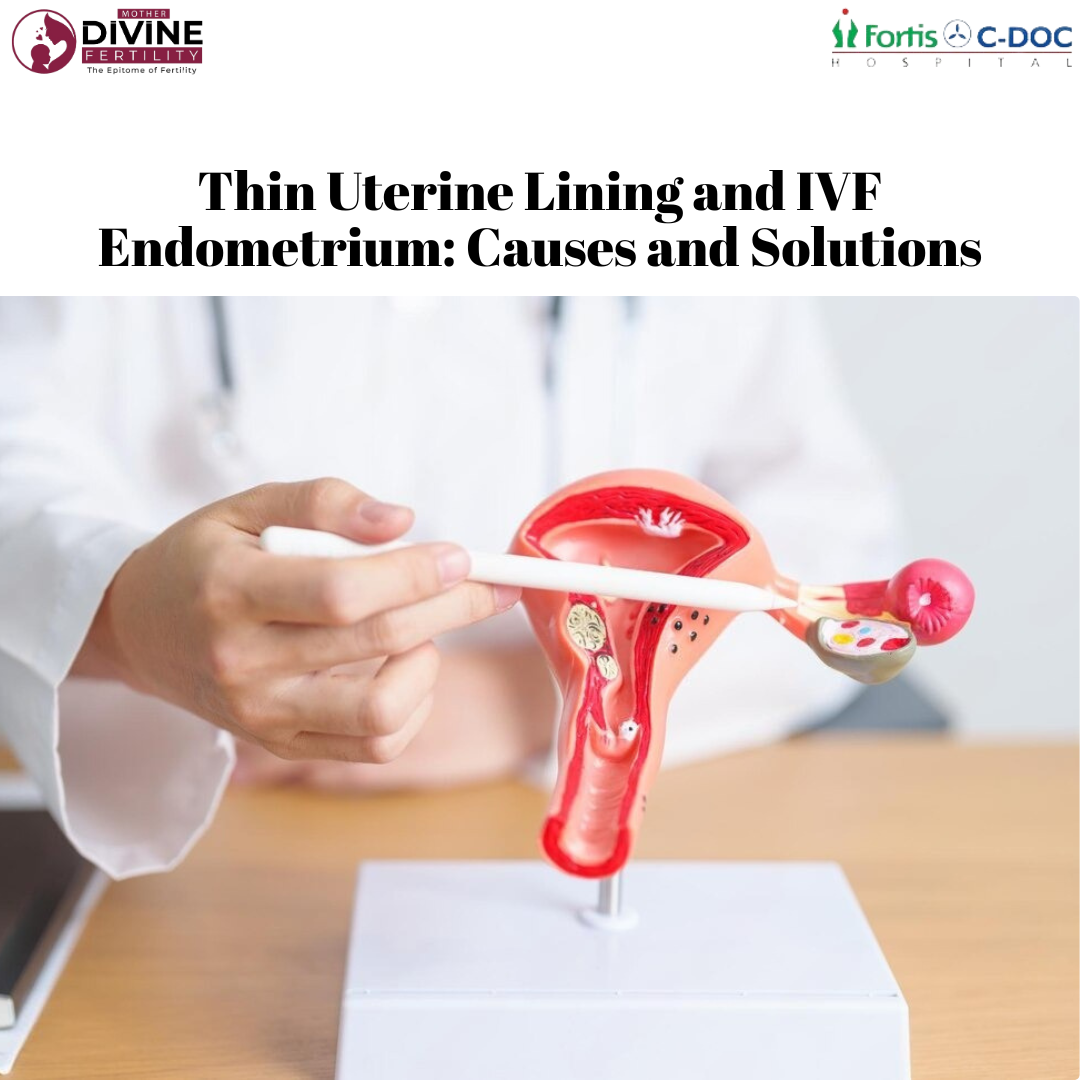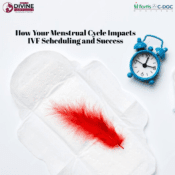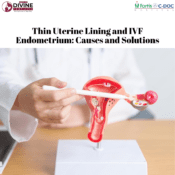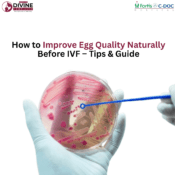

Thin Uterine Lining and IVF Implantation: Causes and Solutions
1. Introduction
For many women undergoing IVF, the journey is filled with hope, determination, and sometimes, unexpected challenges. One such challenge is a thin uterine lining, a condition that can influence the chances of a successful pregnancy.
The uterine lining—also called the endometrium—is the nurturing “bed” where an embryo implants and grows. Just like a seed needs fertile soil, an embryo needs a healthy, receptive lining to thrive. When this lining is too thin, the process of IVF implantation can become more difficult.
In this blog, we will explore what a thin uterine lining means in the context of IVF, why it happens, how it affects implantation, and the various medical and natural solutions available. Whether you’re searching for thin endometrium IVF success stories or ways to increase uterine lining naturally, our goal is to provide you with clarity, practical information, and encouragement.
2. Understanding the Uterine Lining in IVF
What is the Endometrium?
The endometrium is the inner layer of the uterus that thickens each menstrual cycle under the influence of estrogen and progesterone. It is rich in blood vessels and nutrients, creating an ideal environment for embryo implantation.
Ideal Thickness for Implantation in IVF
Doctors measure endometrial thickness during IVF using ultrasound.
Optimal range: 8–12 mm with a trilaminar (triple-line) pattern.
Acceptable range: 7 mm can still allow for reasonable implantation chances.
If the lining is thinner than 7 mm, the chances of implantation may drop, and IVF success with thin lining becomes more challenging.
Role in Embryo Attachment and Growth
A healthy lining:
Supports embryo attachment
Nourishes the embryo until the placenta forms
Promotes stable early pregnancy
3. What is a Thin Uterine Lining?
Medical Definition
In fertility medicine, a thin uterine lining is generally defined as less than 7 mm at the time of ovulation or embryo transfer.
Diagnosis
Ultrasound: Measures the thickness and evaluates the lining’s pattern.
Hormone Tests: Assess estrogen and progesterone levels.
Blood Flow Assessment: Sometimes performed to check uterine circulation.
Why It’s a Challenge in IVF Treatment
Even high-quality embryos may fail to implant if the endometrium is too thin, leading to reduced success rates or early miscarriages.
4. Causes of Thin Uterine Lining
Hormonal Imbalances (Low Estrogen Levels)
Estrogen helps the lining grow and thicken. Low levels—due to ovarian issues or certain medications—can prevent optimal growth.
Poor Uterine Blood Flow
Limited circulation can deprive the lining of oxygen and nutrients.
Scar Tissue (Asherman’s Syndrome)
Scar formation inside the uterus from surgeries, D&Cs, or infections can reduce the lining’s thickness.
Previous Surgeries or Infections
Pelvic surgeries, fibroid removal, or chronic endometritis can cause lasting damage.
Long-Term Birth Control Use
Prolonged suppression of the endometrium can sometimes result in slower regrowth.
Medical Conditions
PCOS: Hormonal imbalances may prevent proper endometrial development.
Endometriosis: Can alter the uterine environment and reduce receptivity.
5. How Thin Lining Affects IVF Implantation
Embryo Attachment Issues: The lining acts as a “receptive bed.” If it’s too thin, the embryo may fail to anchor.
Reduced Implantation Rate: Research shows lower success when lining is below 7 mm.
Increased Risk of Miscarriage: Even if implantation occurs, a weak lining may not sustain early pregnancy.
6. Diagnosis and Evaluation
Ultrasound Measurement
A transvaginal ultrasound gives the most accurate reading of endometrial thickness and texture.
Doppler Blood Flow Studies
Used to evaluate whether the uterus is receiving adequate blood supply.
Hormonal Profile Checks
Blood tests measure estrogen, progesterone, LH, and FSH levels to find hormonal causes.
Hysteroscopy
A thin camera is inserted into the uterus to detect scar tissue, adhesions, or other abnormalities.
7. Medical Solutions for Thin Uterine Lining
Hormonal Therapy
Estrogen Supplements: Taken orally, as patches, or injections to stimulate lining growth.
Progesterone Support: Prepares the lining for implantation during IVF.
Medications to Improve Blood Flow
Sildenafil (Viagra): In vaginal form, it improves uterine circulation.
Low-dose Aspirin: Enhances blood flow and supports implantation.
Growth Factors and Stem Cell Therapy
Advanced treatments aimed at regenerating endometrial tissue.
Platelet-Rich Plasma (PRP) Therapy
PRP is injected into the uterus to encourage healing and growth in stubborn thin lining cases.
8. Lifestyle and Natural Remedies
Nutrient-Rich Diet
Iron: Spinach, beetroot, lentils to boost blood production.
Vitamin E: Almonds, sunflower seeds for tissue health.
Antioxidants: Berries, pomegranate to fight oxidative stress.
Exercise & Yoga
Gentle yoga poses, walking, and stretching can improve pelvic circulation.
Avoid Harmful Habits
Eliminate smoking, reduce alcohol, and cut down caffeine for better reproductive health.
Stress Management
Meditation, breathing exercises, and counseling can help balance hormones.
9. Advanced IVF Approaches for Thin Lining
Modified Embryo Transfer Timing
Transferring embryos when the lining is at its most receptive stage.
Frozen Embryo Transfer (FET)
Allows doctors to delay transfer until optimal endometrial conditions are achieved.
10. Success Stories and Hope
Many women have overcome thin lining challenges with persistence and the right treatment.
For instance, a patient at the Best IVF Centre in Delhi improved her lining from 5.5 mm to 8.2 mm using estrogen therapy and PRP treatment, leading to a successful pregnancy.
Another case involved a woman with Asherman’s Syndrome who achieved thin endometrium IVF success after surgical removal of scar tissue and subsequent FET.
These stories prove that with proper care, IVF success with thin lining is possible.
11. Conclusion
A thin uterine lining may be a hurdle, but it is not the end of your IVF journey. With the right medical evaluation, targeted treatments, and supportive lifestyle changes, many women go on to have healthy pregnancies.
If you are facing challenges with IVF implantation thin lining, it’s essential to consult experienced specialists.
Consult the Best IVF Centre in Delhi for personalized treatment, advanced therapies, and compassionate care to help you achieve your dream of parenthood.





